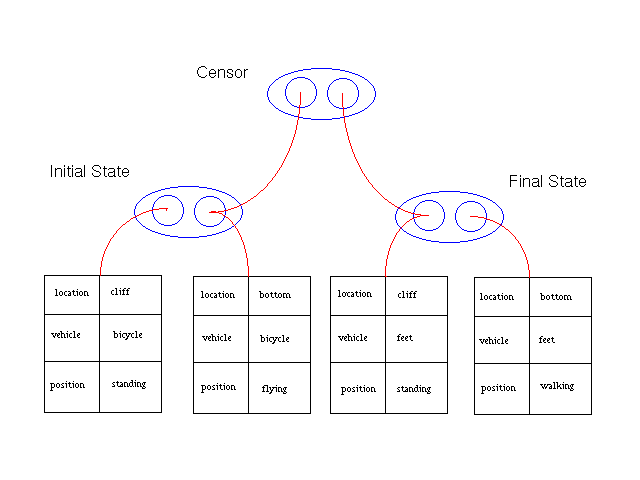Humor can be described as a method of stopping the brain to allow censors to be built to keep a person from thinking the same thing again.
One theory on what is funny is that people find things funny just long enough so that they can block those things out of their minds. Thus humor functions as method of shorting out the mind in order to allow it to block one thing out, and build structures that will keep that thought from occurring again.
This can be seen in the derisive laughter of children at another child who is different. That child will hear the laughter, and build in all of the children's minds censors which will prevent the behavior described. The noise of the laughter is sufficient to attract the attention of anyone who happens to be nearby. This results in nearby people coming and learning this lesson on not being different.(see section 27.2 in SOM)
This is evolutionary beneficial for two reasons. First, it ensures that a community will have similar values. Second, it reduces the number of times a single lesson must be learned. While many things people laugh at are absurd and irrelevant, others are important issues in life. If a child adds 4 and 5 and gets 11, they will be laughed at. This shows them that this is an inappropriate thing to say. In addition, it teaches the same lesson to other students who may have been unsure about it.

In the brain, these censors can be seen as trans-frames with origins and destinations at other trans-frames. The censor looks for thought processes which resemble the origin. When the mind reaches the state at which it would make the censored step, the censor short circuits the trans-frame so that it will lead to a different end result.
For example, Matt is at school, and he hears about someone going down a steep hill on a bicycle. Since it is not anyone he knows, he laughs and finds it funny. At this point, a censor is created against doing something that would make him the butt of the same joke. Later that week, Matt is standing at the top of a cliff with his bicycle. He wants to get to the bottom. However, before he can even think of the idea of riding his bicycle off the edge of the cliff, the censor kicks in and changes to another trans-frame which involves him walking down the path, thereby saving him from falling down the cliff. While this is a somewhat absurd example, it communicates some of the process involved in creating a censor.